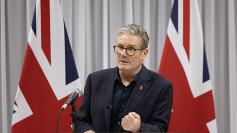While some of the biggest economies around the world struggle with a second wave of the coronavirus pandemic, other, smaller nations in Southeast Asia are successfully containing the virus.
Vietnam
Unlike other countries that seemed oblivious to the early days of the pandemic, Vietnam immediately implemented border control measures to prevent further COVID-19 infections in the country.
For the month of September, daily new confirmed coronavirus cases in the country ranged from zero to five, marking a significant difference when compared to daily infections in bigger Southeast Asian nations.
In fact, Vietnam boasted of zero locally transmitted COVID-19 infections for more than three months until a small outbreak in the beach city of Danang broke the three-month record late July.
Despite the new outbreak, the Vietnam government quickly contained the Danang cluster by implementing travel restrictions and testing and contact tracing.
Economists believe Vietnam could be the only Southeast Asian economy to see a comeback this year after it successfully controlled the spread of COVID-19 not once, but twice.
As of Tuesday, Vietnam had 1,094 confirmed coronavirus cases and 35 deaths.
Cambodia
In May, the World Health Organization recognized Cambodia as one of fewer than 30 countries that recorded fewer than 300 confirmed COVID-19 infections since the pandemic began.
At that time, the World Health Organization said Cambodia made crucial investments on its health security system over the past decade that helped the country overcome its battle against the virus.
The World Health Organization mentioned Cambodia's "indicator-based system" in particular that collects targeted data on seven disease syndromes to help medical experts across public health facilities in tracking down the novel coronavirus.
As of Tuesday, Cambodia had 277 confirmed COVID-19 infections and zero deaths.
Brunei
Brunei has rarely been in the headlines during the pandemic.
Not only has the country had 146 confirmed cases only and three deaths as of Tuesday, its efforts against the disease appear to have gone unnoticed.
Mandatory isolation of international arrivals - whether citizens not - close monitoring of confirmed coronavirus cases, and swift responses to the need for contact tracing, were among the anticoronavirus measures implemented.
Strict screening and symptom checking at entry points was another key point of the sultanate's successful war against COVID-19.
The small country already had a significantly low infection rate but in March Brunei announced some of Southeast Asia's toughest restrictions to prevent new outbreaks. Restaurants were closed and all foreign entrants were banned.
Even this month, Brunei's health ministry continued to urge residents to practice proper social distancing and be aware should they experience any COVID-19 symptoms.
Laos
Laos has had 23 confirmed COVID-19 cases only. It reported its first two infections late in March.
Even as the country has seen a small number of infections the government continues to implement anti-coronavirus protocols to prevent new outbreaks - especially in its borders.
Among the measures that the Lao government has taken is strict monitoring of potential symptoms on people entering the country.
Furthermore, there are 44 COVID-19 accommodation facilities across the country where health care providers are monitoring potential cases and those who recently traveled to the country.
Laos has had zero deaths linked to the disease.






